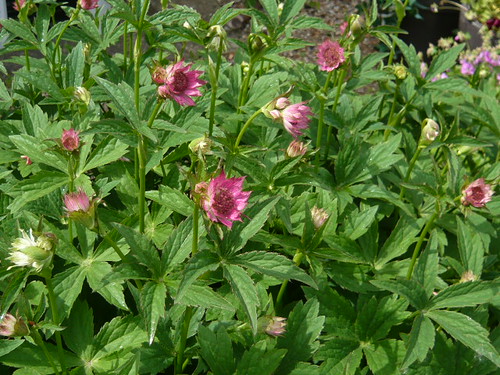Tips for Growing Astrantia
Astrantia are unassuming garden perennials now coming into flower from June .
Tips for Cultivating Astrantia
- Astrantias are superb perennials for the stream edge or a moist border.
- They may tolerate drier soils as long as the plants are mulched
- ‘Claret’ is a beautiful variety with deep red pincushion flowers.
- After flowering, plants can be rejuvenated by cutting them back close to the ground – fresh new foliage and a late crop of flowers start appearing shortly after.
- Plants do not make big clumps or spread but they can be split in early spring.
- Grow from fresh seed or buy as plants. Thompson Morgan
Astrantia Varieties and Features
- Astrantia have star-like flower heads in reds, pinks and pastel shades.
- The variegated form has an AGM Astrantia major ‘Sunningdale Variegated’
- Astrantias make excellent dried flowers – cut the stems before the seed sets and dry in a cool, airy place.
- Try the dark-red forms such as Astrantia major ‘Ruby Wedding’ and Astrantia ‘Hadspen Blood’
- There are half a dozen species with aromatic roots, palmate leaves, and decorative flowers.
See also Astrantia in a Basket


2 thoughts on “Tips for Growing Astrantia”
I put 6 mixed astrantia plants in a bed w/ dayliles, foxglove, shastas, tradescantia about 12 wks ago. All else is doing well. The astrantia looks like it did when planted. I live in south central PA. We’ve had a bit of a dry spell but the moisture required has been provided. I’ve fertilized w/ fish emulsion and/or kelp and loosened earth around plants. They are in a dappled sun/shade area. They’re not dying, at least, quickly, they are just not thriving. Suggestions please?!. I’m thinking of moving them to another bed where I relocaie unihrify plants.i.e., start them again.
I would leave them undisturbed and hope they excel next year. I wouldn’t feed them any more but keep up the watering as they like it boggy.
Comments are closed.